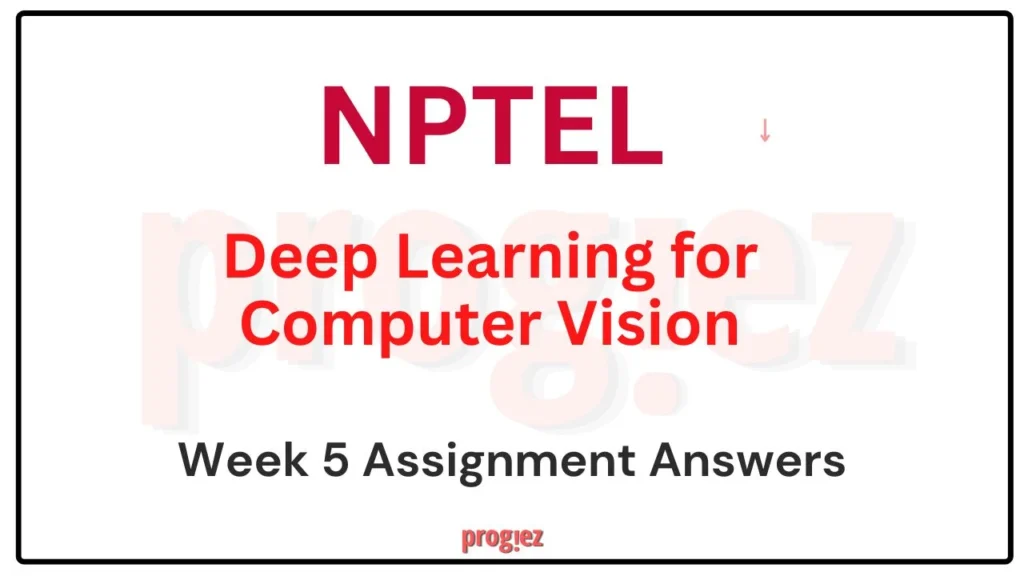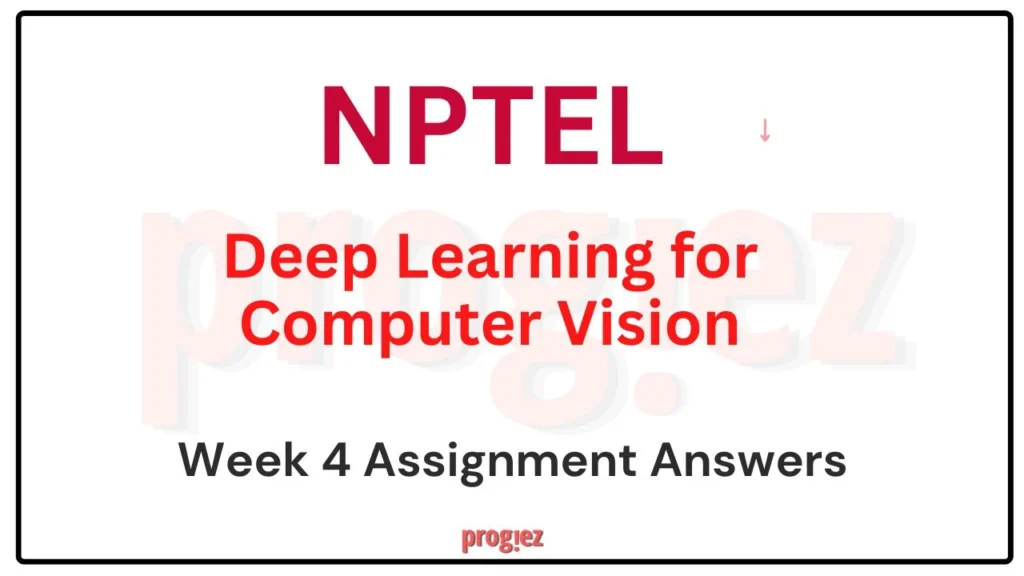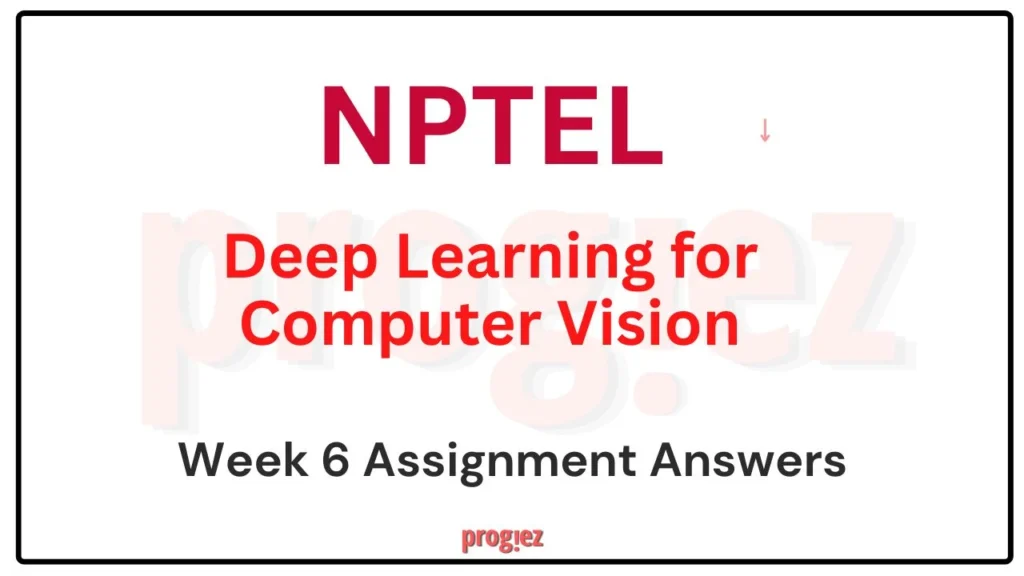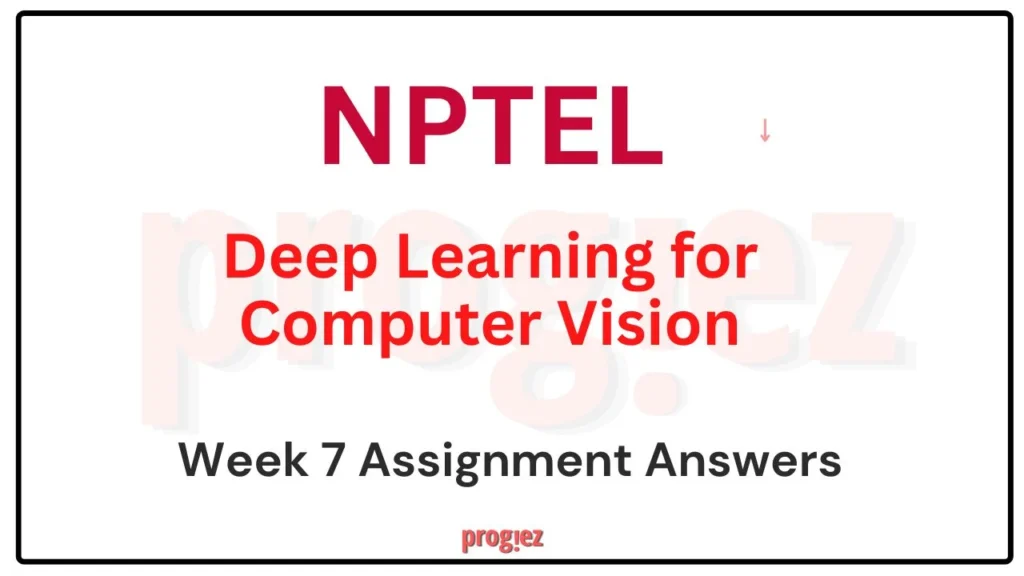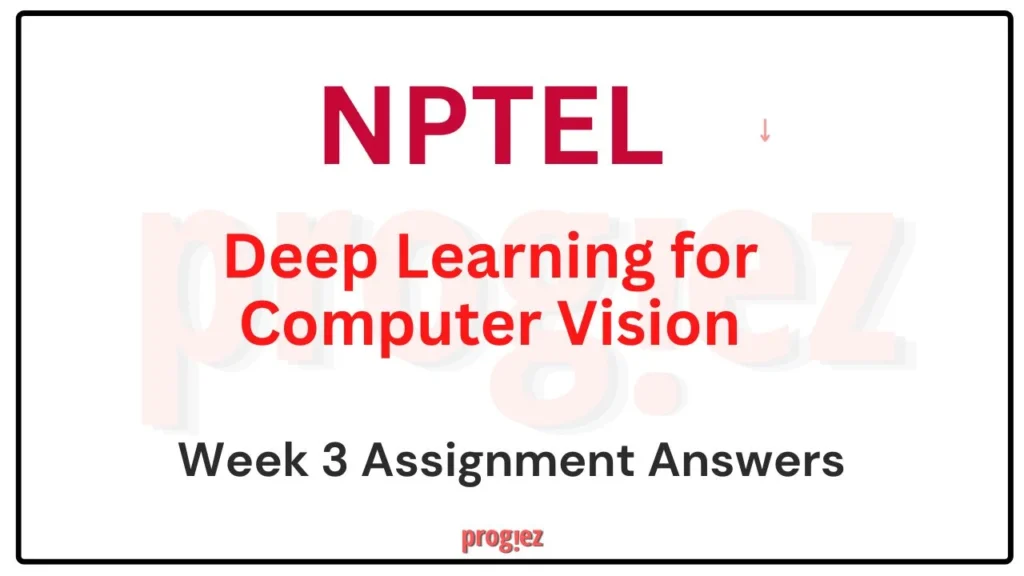Deep Learning For Computer Vision Week 2 Nptel Answers 2024
Are you looking for the Deep Learning For Computer Vision Week 2 Nptel Answers (July-Dec)? You’ve come to the right place! Access the latest Deep Learning For Computer Vision Week 2 Nptel Answers
Course link on Nptel Website: Visit Here
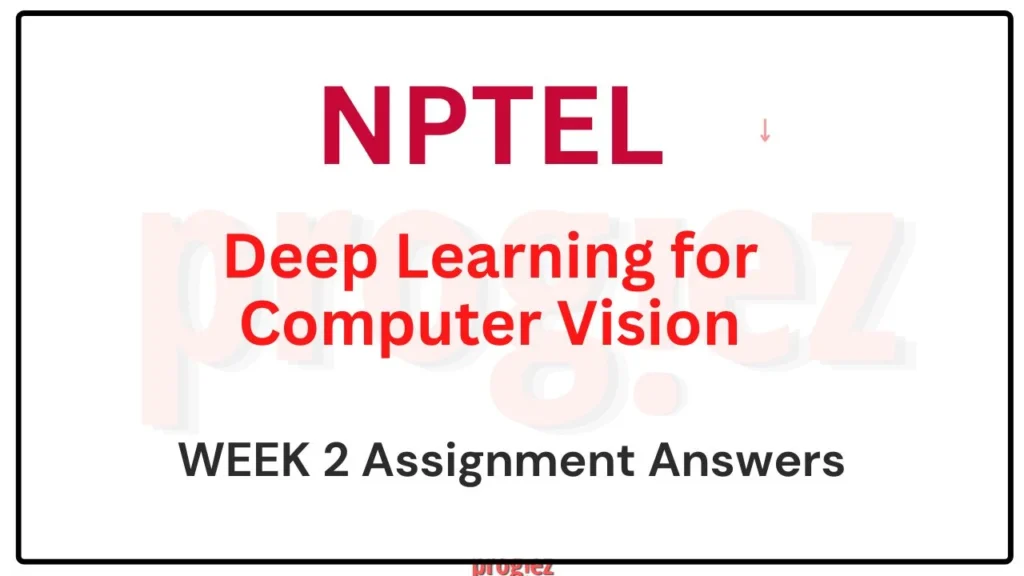
Deep Learning For Computer Vision Week 2 Nptel Answers
Session: JULY-DEC 2024
Q1 ) Which of the following are examples of a high-pass filter? (Select all possible correct options)
a) ⎢−2−2−2−2−2−2−2−2−2⎤⎦⎥
b) ⎡⎣⎢10−120−210−1⎤⎦⎥
⎡⎣⎢121212121⎤⎦⎥
⎡⎣⎢−1−10−101011⎤⎦⎥
Answer: Updating Soon (in progress)
Q2. Match the following:
1) Gaussian filter i) Edges found when gradient is low
2) Sobel filter ii) Edges found at zero crossing
3) First derivative of Gaussian iii) Edge smoothing
4) Second derivative of Gaussian iv) Edge detection
v) Edges found when gradient is high
1 → iii, 2 → iv, 3 →i, 4 →ii
1 →iii, 2 →i, 3 →ii, 4 →v
1 →iii, 2 →iv, 3 →v, 4 →ii
1 →iv, 2 →iii, 3 →i, 4 →ii
Answer: Updating Soon (in progress)
For answers or latest updates join our telegram channel: Click here to join
These are Deep Learning For Computer Vision Week 2 Nptel Answers
Q3.Identify the correct sequence of steps in a Canny edge detection pipeline. Steps are listed below:
1.Compute gradient magnitude and direction
2. Connect individual components
3. Smoothen the image
4. Threshold into strong, weak, or no edge
5. Gaussian Filter and Hysteresis
6. Non-maximum suppression
7. Apply derivative to get edges
6 →1 →4 →5 →2
3 →1 →6 →4 →2
3 →5 →1 →4 →2
6 →8 →5 →7 →2
Answer: Updating Soon (in progress)
Q4. In terms of computational efficiency, how does the separability of a 2D convolution kernel affect the filtering process?
It has no effect on efficiency
It allows the convolution to be performed as two 1D convolutions, which is faster
It requires more memory but fewer computations
None of the above
Answer: Updating Soon (in progress)
For answers or latest updates join our telegram channel: Click here to join
These are Deep Learning For Computer Vision Week 2 Nptel Answers
Q5. Which of the following operations is an example of linear filtering?
Thresholding an image
Histogram equalization
Morphological dilation
Applying a Gaussian blur
Answer: Updating Soon (in progress)
Q6.What is the purpose of creating a scale space in SIFT?
To remove noise from the image
To detect features at different scales
To enhance edge detection
To compress the image
Answer: Updating Soon (in progress)
For answers or latest updates join our telegram channel: Click here to join
These are Deep Learning For Computer Vision Week 2 Nptel Answers
Choose the correct statements from among the following:
Q7.1.For any low-pass or high-pass filter, the sum of the filter coefficients always adds up to 1.
2.Brightness enhancement by image addition is a point operation.
3.k(a∗b)=(ka)∗(kb), where a is the image, b is the filter, k is a scalar and ∗ is the convolution operator.
only 1
1 and 2
only 2
None of the above
Answer: Updating Soon (in progress)
Q8.Which of the following statements is false?
Real-world RGB images can be thought of as matrices in continuous space on R3, but the images we store on a computer are discrete.
We can represent an RGB image as a function of the form. f:R3→R where R3
represents image coordinates (channel, height, width) and R represents intensity.
The transformation I^(x,y)=I(x,−y) flip the image I upside down.
Denoising an image through the moving average filter is an example of global operation as opposed to point or local operations.
Answer: Updating Soon (in progress)
Q9.Assertion (A): Gabor filters are particularly effective for texture analysis in image processing.
Reason (R): Gabor filters can be tuned to respond to specific frequencies and orientations in an image.
Choose the correct answer from the options below:
Both A and R are true, and R is the correct explanation of A.
Both A and R are true, but R is not the correct explanation of A.
A is true, but R is false.
A is false, but R is true
Answer: Updating Soon (in progress)
Q10. Which property is SIFT designed to be invariant to?
Only rotation
Only scale
Rotation and scale
Scale, rotation, and illumination changes
Answer: Updating Soon (in progress)
Q11. What is the primary difference between blob detection and corner detection?
Blob detection finds regions, while corner detection finds points
Blob detection finds circles, while corner detection finds rectangle
Corner detection works on color images, while blob detection only works on gray scale
Blob detection requires machine learning, while corner detection doesn’t
Answer: Updating Soon (in progress)
Q12.Given is a 3 × 3 image,
The central element after applying linear contrast stretching is:
54
25
13
18
Answer: Updating Soon (in progress)
These are Deep Learning For Computer Vision Week 2 Nptel Answers
All weeks of Deep Learning For Computer Vision Week 2 Nptel Answers- Check Here
For answers to additional Nptel courses, please refer to this link: Check here
